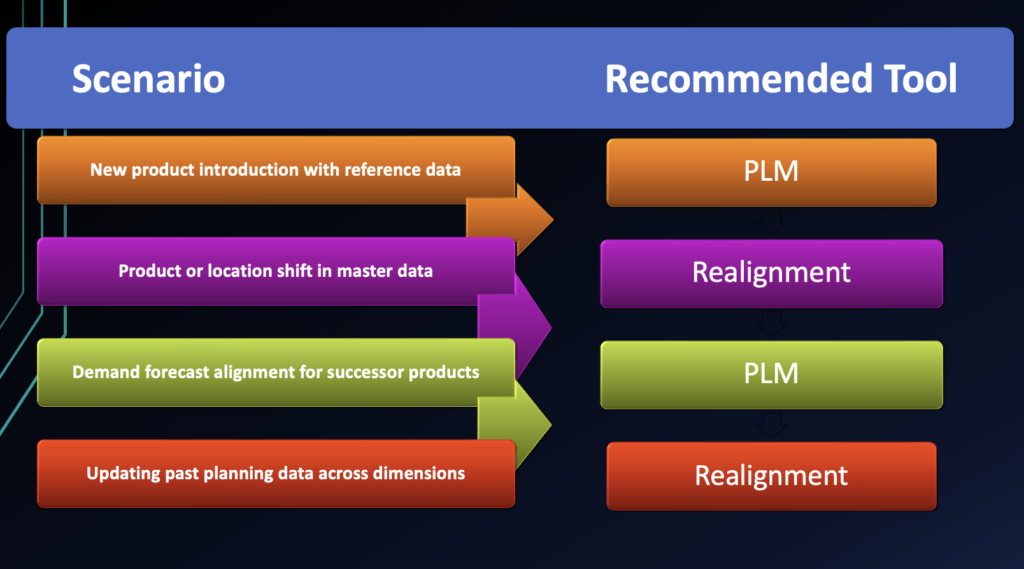
In dynamic markets where product portfolios are constantly evolving, supply chain planners need to manage both new product introductions and transitions effectively. SAP Integrated Business Planning (SAP IBP) offers two powerful tools to support these scenarios: Product Lifecycle Management (PLM) and Realignment. While both serve the purpose of maintaining planning continuity, they are designed for very different use cases. One of Bolders Consulting Group’s consultants explored the key differences and when to use each:
Purpose and Use Case
- Product Lifecycle Management (PLM):
PLM is used to model the evolution of a product, from introduction to phase-out. It supports like-modeling, allowing historical sales of an existing (reference) product to be used to forecast a new (successor) product.
Use when introducing a new product that is replacing or similar to an existing one.
- Realignment:
Realignment is used to transfer planning data from one master data combination to another. It can be used across different levels of the supply chain, including changes in product location, customer groups, or channel hierarchies.
Use when there’s a structural change in the supply chain model, such as moving a product from one location to another or reclassifying a customer.
Timing and Planning Horizon
- PLM is typically forward looking and supports future planning especially useful in demand planning for upcoming product launches.
- Realignment is often used in both past and current data corrections; such as retroactively updating historical sales or shifting existing inventory/demand across dimensions.
Flexibility and Configuration
- PLM is more focused and guided. It requires setting up lifecycle profiles and modeling strategies but is limited to like-product scenarios.
- Realignment is more flexible and technical. It involves configuration of selection and target rules in SAP IBP configuration UI and can be applied to a wider set of planning objects.
Performance and Risk Considerations
- PLM operations are typically lightweight and user-friendly for planners.
- Realignment, if not configured carefully, can be performance intensive and impact large volumes of planning data so it’s often recommended to run during low-traffic windows or via background jobs.
Bottom Line
While both Product Lifecycle Management and Realignment in SAP IBP aim to support business continuity and agility, they serve very different strategic purposes:

Understanding the distinction helps organizations maintain a clean planning model, ensure forecast accuracy, and respond faster to market shifts.
Do you have any questions about Bolders Consulting Group’s services? Or, are you looking for more information regarding our solution development services? Contact Bolders today to learn how we can help transform your business with SAP technology!

